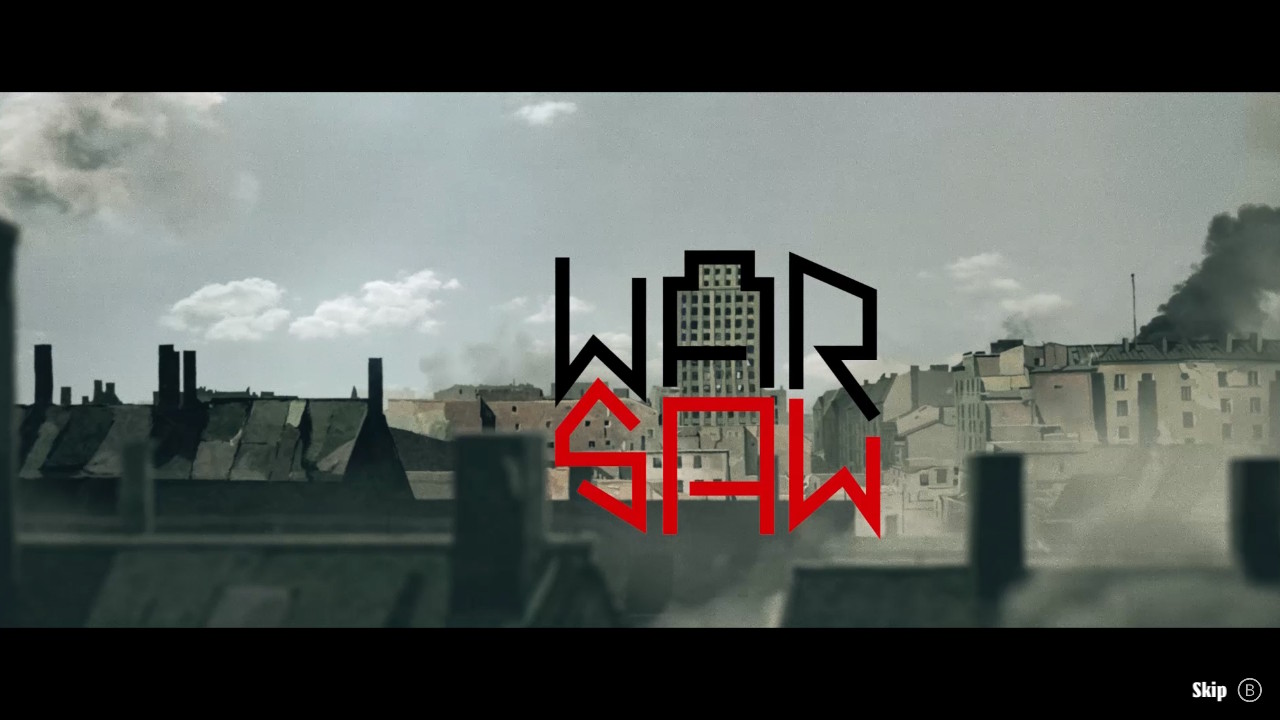[Review] Warsaw – Nintendo Switch
Warsaw
Nintendo Switch
Developed By: Pixelated Milk, gaming company
Published By: Crunching Koalas
Category: Strategy, Role-Playing
Release Date: 10.01.20
Composers: Mariusz Szypura
Warsaw for the Nintendo Switch puts players in charge of a cell of resistance fighters during the Warsaw Uprising in the closing days of World War II. Players have to survive 63 brutal days of the Uprising’s desperate plan to free Warsaw from Nazi occupation, only for the terrible reality of the Uprising’s end to take place anyway. It’s hard to fully capture the hopelessness of the situation and the courage of the men and women who fought in the Uprising in a video game and still manage to balance it in a way that won’t completely turn players away, but I think the developers founds a way to do it that does the Uprising justice.
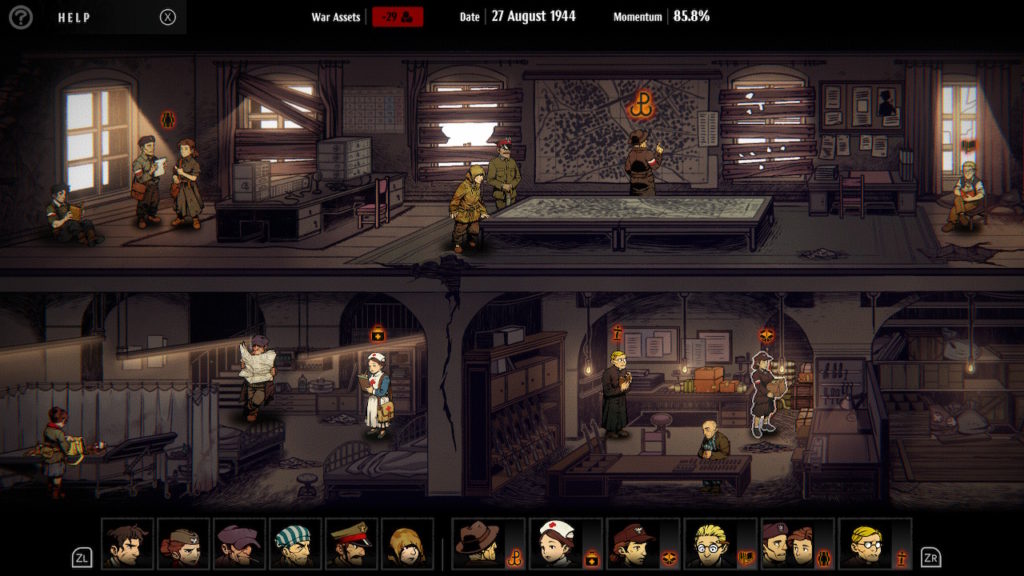
The Hideout
Players manage their Uprising cell primarily through the use of the headquarters screen. It’s fairly similar to the HQ from the X-Com series, except you can’t really add anything to it; all of its functions are there from the start. It’s not like there are that many, anyway. You can buy and sell equipment, ammunition, and other supplies, recruit new generic soldiers, check your codex, upgrade your unique soldiers, and use the mission table to check the progress of the Uprising and send your team out on missions. Warsaw is divided into six districts where you need to maintain a presence. After every day that passes, attrition affects the Uprising’s momentum, morale, and hold on those areas. It’s tough to keep things going well; by the end of my playthrough, I was barely holding on to just one district. The last of the other five had fallen a week before the 63 day deadline.
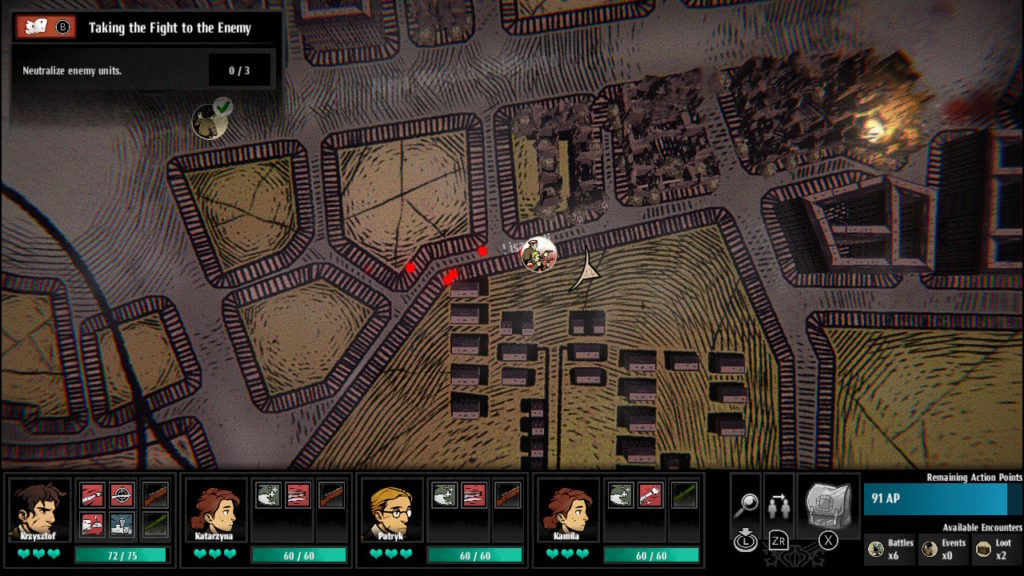
City Life During Wartime
When you do launch a mission, you take control of your squad’s icon on a city map. You maneuver your team through the city’s streets, looking for whatever you need to complete your objective for that mission. Some will require you to eliminate enemy troops, some will have you collecting resources, and others will just have you finding ways to help citizens around the district. You have a set number of action points to use during a mission that deplete as you move around. If you run out of AP without completing your objective, the mission is failed. There are different icons on the map that you can discover; supply crates gift you ammo and supplies, encounter icons initiate small, text-based events, and enemy icons result in fights. Before an icon appears, an arrow around your squad icon will show you where a point of interest may be. You can’t tell what kind of icon it is until you get within a close enough range.
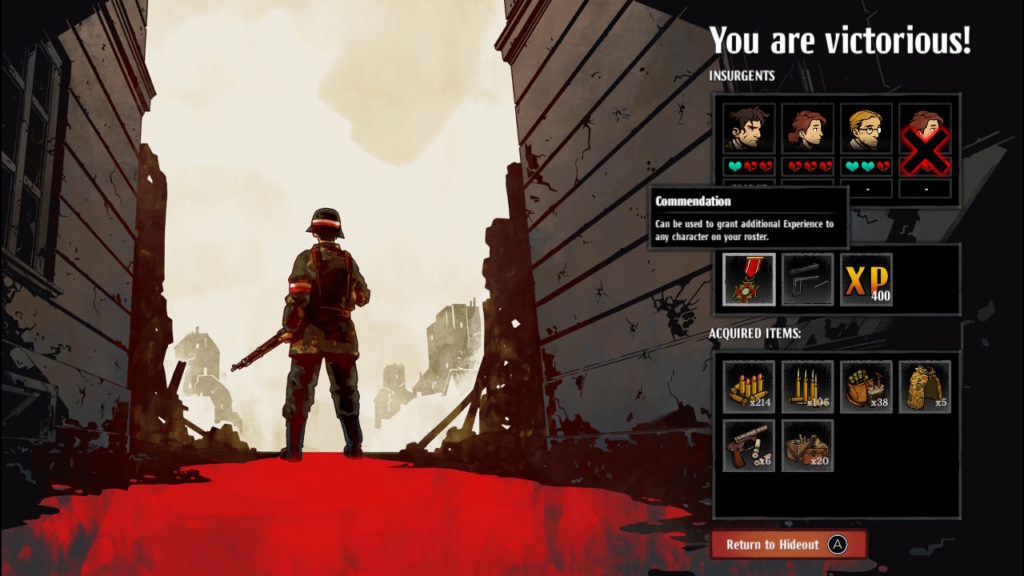
Can’t Fight Without Supplies
Your squad has a pretty limited amount of inventory space. You have to decide what combination of ammunition, field items, and empty space to carry with you into a mission. There are three types of ammo; short, long, and heavy. I found a lot of extra inventory space by comprising my active squad entirely out of characters that only used two of the three ammo types. There are four types of field items. You can use a compass to temporarily reduce your AP consumption and grant yourself some extra time. Camouflage is used to hide your presence from enemy patrols. A flare gun will let you identify nearby icons without having to establish visual contact. Finally, first aid kits let you recover your team’s health outside of combat.
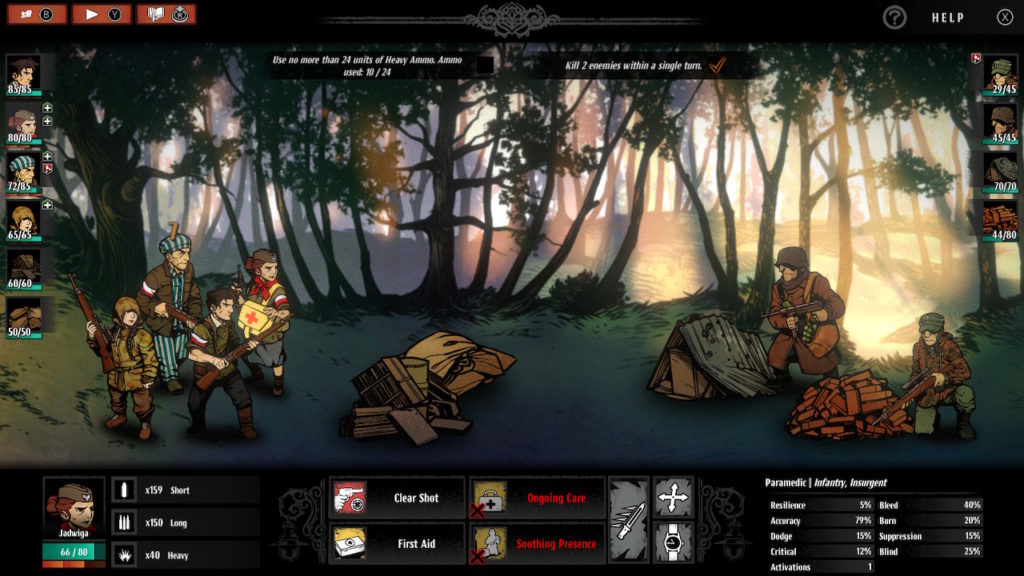
Fighting Back Street By Street
Once you come into contact with an enemy unit, combat is turn-based, and divided into rounds. The number of actions you get per round is similar to the system from the Valkyria Chronicles series; you get an action point for every character in your squad. Some elite enemies give their side an additional action point. You don’t have to give each of your characters an action every round; you can have any character act, as long as they have any stamina points left. Every character has three stamina points, and they regenerate one every round.
Your characters’ available attacks are based on their equipment; some characters have rifles that do high accuracy damage to a single enemy, and some have machine guns or rocket launchers that do low accuracy damage to a group of enemies, just to name a few. Weapons can also add status effects like suppression, which stop an enemy from attacking, or bleeding, which does a little damage every time that unit takes an action.
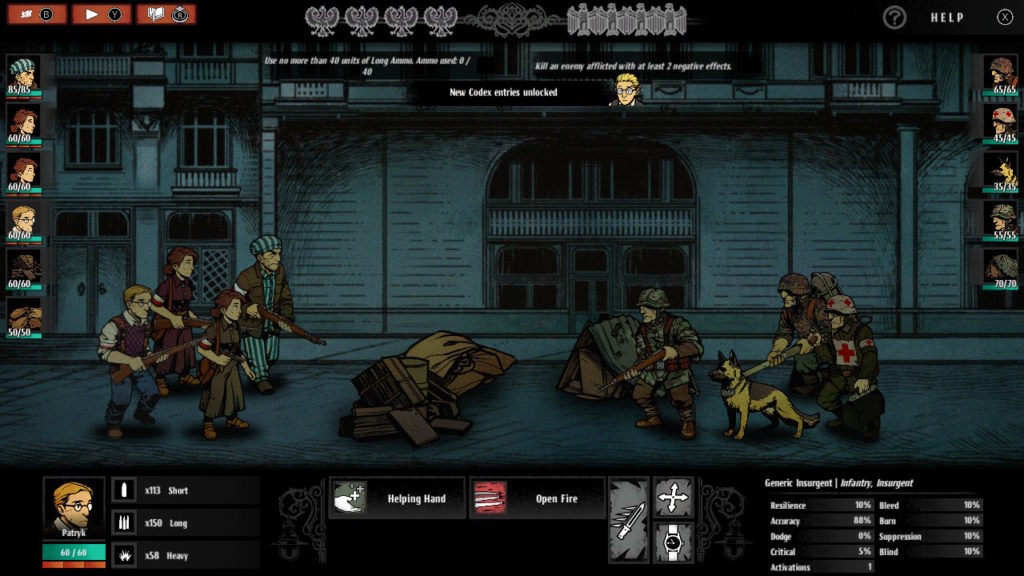
Taking Position
The battlefield is divided into two halves; one for your enemy, and one for you. Each side has eight spots for a unit or obstacle to occupy; units can’t move into spots with obstacles, but taking the spot next to an obstacle outs your unit in cover. Units in cover have a higher chance to avoid taking a hit and take reduced damage when they do. Some attacks will move their targets around the battle area; since a lot of the game’s most powerful attacks will only hit either the farthest back or nearest rows, manipulating your enemies’ position can be key to ending a battle quickly and save yourself some supplies, which always seem to be running short. That said, while it can make for some interesting strategic positioning, it doesn’t always do so – or even do it most of the time. If you get a character with a grenade launcher that does high damage across a large area – as one of the default unique soldiers does – just bring them and a lot of heavy ammo with you. It makes strategy surplus to requirements.
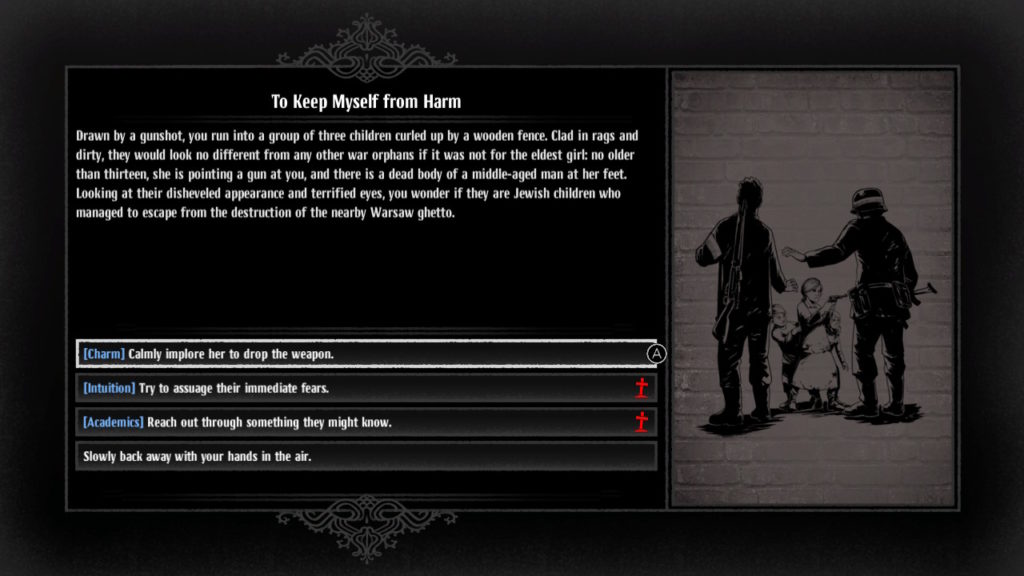
Telling Your Team’s Stories
I’ve mentioned unique soldiers more than once, and how they’re more powerful than the generic units that can be recruited through your HQ. Not only do they have access to a wider array of weapons and skills, they can be upgraded with new abilities and stat boosts that make them even stronger. Unfortunately, they can only be recruited randomly during events that occur after completing a mission. More importantly, though, their codex entries unlock as you complete more missions with them, which is where the heavy lifting of the game is done in terms of storytelling.
The game doesn’t really have a central narrative, which should be something of a weakness. Instead, Warsaw lets the Uprising’s history tell its own story, and the game chooses to tell the smaller, but no less resonant, stories of its unique soldiers in brief, devastating detail as they wage an ever-more-hopeless war. Unlocking new parts of a character’s codex fleshes out their sacrifice, and the many horrors of Nazi occupation. You will recruit an escaped concentration camp prisoner looking for his wife, a former teacher turned battlefield medic, and, most devastating of all, Franciszek the Scout. Franciszek is a young boy recruited into the messenger and scouting division of the Uprising army; young, like, a literal child young. You can see your characters in the HQ between missions; seeing Franciszek in the midst of guns and soldiers, quietly playing with his trains while a desperate, doomed struggle unfolds around him is perhaps the most heartbreaking image Warsaw has to offer.
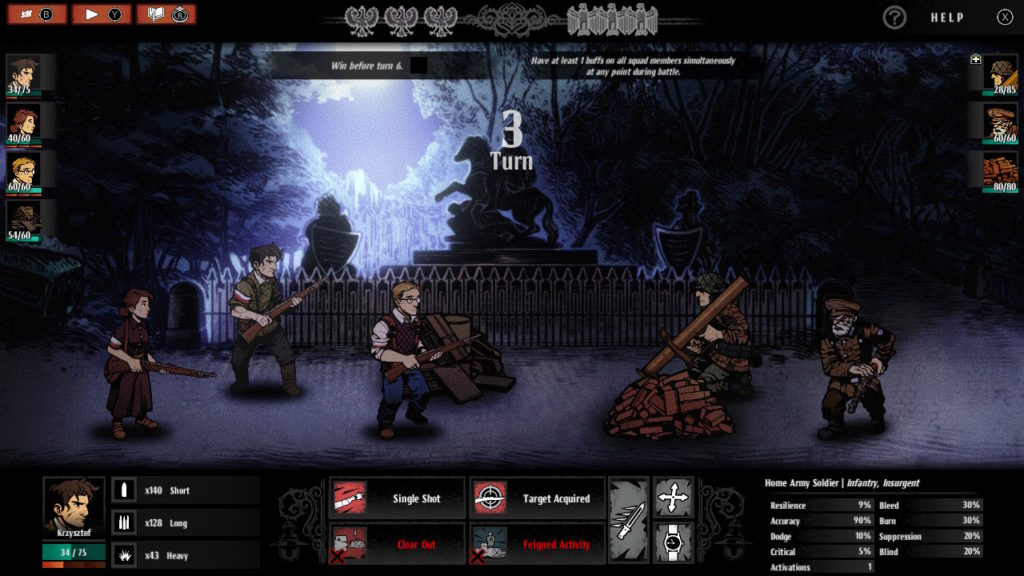
The Art of War
For the most part, Warsaw both looks and sounds great. The game’s graphics have a really cool, hand-drawn aesthetic that look straight out of a highly stylized graphic novel. The game’s heavy use of greys, browns, and darker colors for backgrounds highlights the stark reality of the situation in the city, as do the low, deep tones prevalent in the soundtrack. In contrast, the game’s unique soldiers tend to feature some brighter colors, visually emphasizing their bravery and defiance in the face of an impossible situation. Unfortunately, there is one blemish on the game’s visuals; the game’s text size is miniscule. It’s basically unreadable if you’re playing undocked, and it’s not that great on a TV either. There’s plenty of blank space in those text boxes, guys: fill ‘em up!
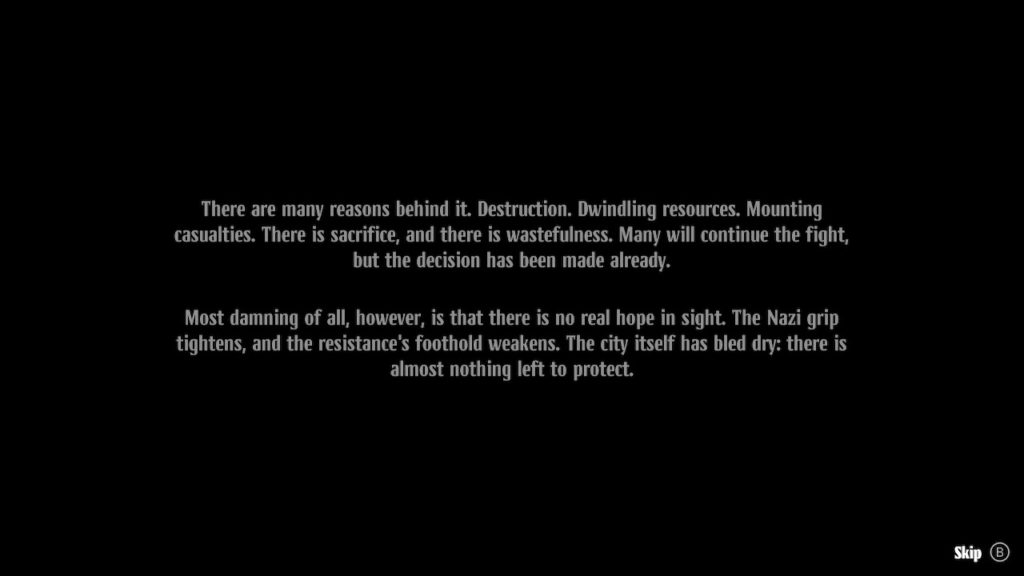
Warsaw Saw War
The Warsaw Uprising doesn’t get a lot of attention when people look back on WWII – at least not here in the States. We tend to focus on our victories and ultimate triumph to the exclusion of more devastating stories like the uprising. Warsaw provides players a brief glimpse into the harsh realities of the Uprising; it’s stories aren’t deep, and they don’t reveal all the facts of the situation, but they hit hard. The gameplay is fine enough; while complex strategies are possible, they’re not really necessary. Warsaw’s visuals are somewhat weakened by the text size problem, but otherwise strong. Taken as a whole package, Warsaw presents a worthy experience for gamers of all stripes.





Buy Warsaw
Digital – $19.99
Follow Pixelated Milk
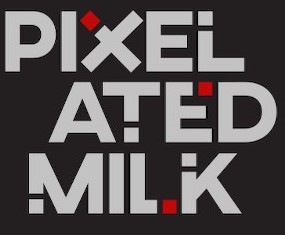
Follow gaming company

Follow Crunching Koalas
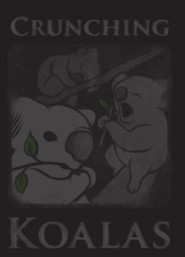
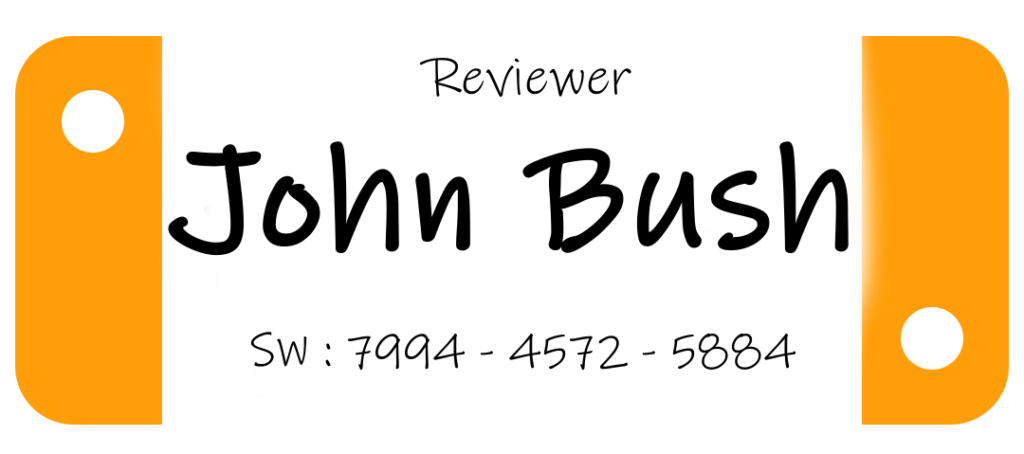
The Switch Effect was graciously supplied a code for review purposes.

